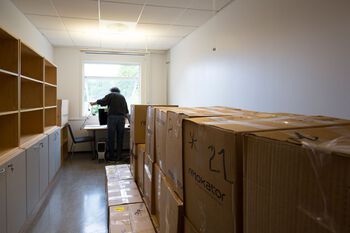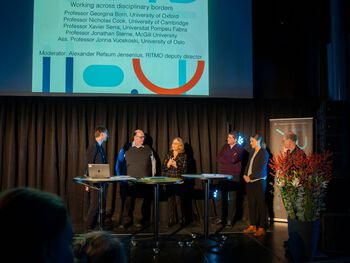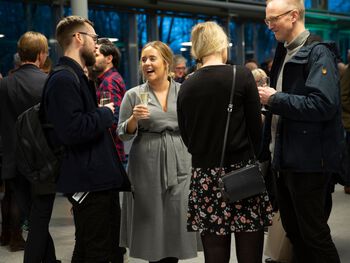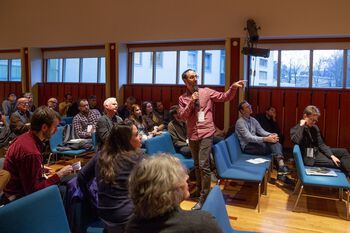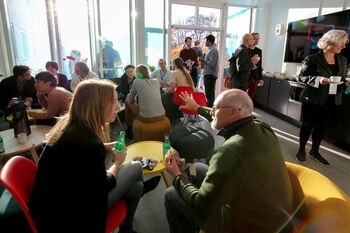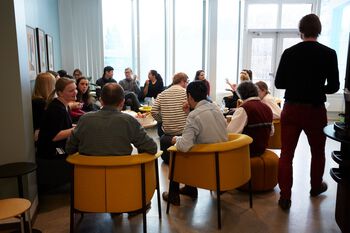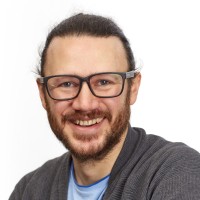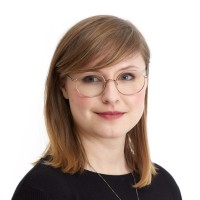2018 was the year that RITMO went from idea to reality. Even though many things have changed since we first started planning RITMO in 2013, the core people, the main ideas, and the excitement of being part of something unique are still there!

One of the things we are most proud of is the truly interdisciplinary nature of RITMO. Everyone is talking about the need to work across disciplines, but not so many really try to do this in practice. As Centre Directors, we spent a lot of time in 2018 building a solid administrative and organizational platform for a centre that spans three departments in three faculties. We are grateful for the support we have received from the University of Oslo throughout this process. We believe that the establishment of RITMO has helped pave the way for future interdisciplinary initiatives.
The most important part of RITMO is the people working here. Many people moved from their host departments to RITMO in August 2018, and soon after we welcomed the first group of new recruits as they arrived in September. It was fantastic to see our premises change from a construction site into a buzzing working environment in just a few months.
2018 was the year of change, the year that RITMO came into being. Here we present some highlights from the year, in time, rhythm, and motion.
Anne Danielsen and Alexander Refsum Jensenius


RITMO at a Glance
Rhythm is omnipresent in human life, as we walk, talk, dance and play; as we tell stories about our past; and as we predict the future. Rhythm is also central to human biology, from the oscillations of our nervous system to our heartbeats, breathing patterns and longer chronobiological cycles. As such, it is a key aspect of human action and perception that is in complex interplay with the various cultural, biological and mechanical rhythms of the world.
RITMO undertakes research on rhythm in human action and perception, using music, motion and audio-visual media as empirical points of departure. Our core idea is that the human ability to experience the world and our actions as rhythmic, points to basic perceptual and cognitive mechanisms that are in themselves rhythmic in nature. The vision of RITMO is to understand more about these mechanisms, and through this generate new knowledge about the ways in which humans structure and understand the temporal dimensions of their life.
The centre is interdisciplinary and combines perspectives and methods from music and media studies, philosophy and aesthetics, cognitive neuroscience, and informatics, using state-of-the-art technologies for motion capture, neuroimaging, pupillometry and robotics.
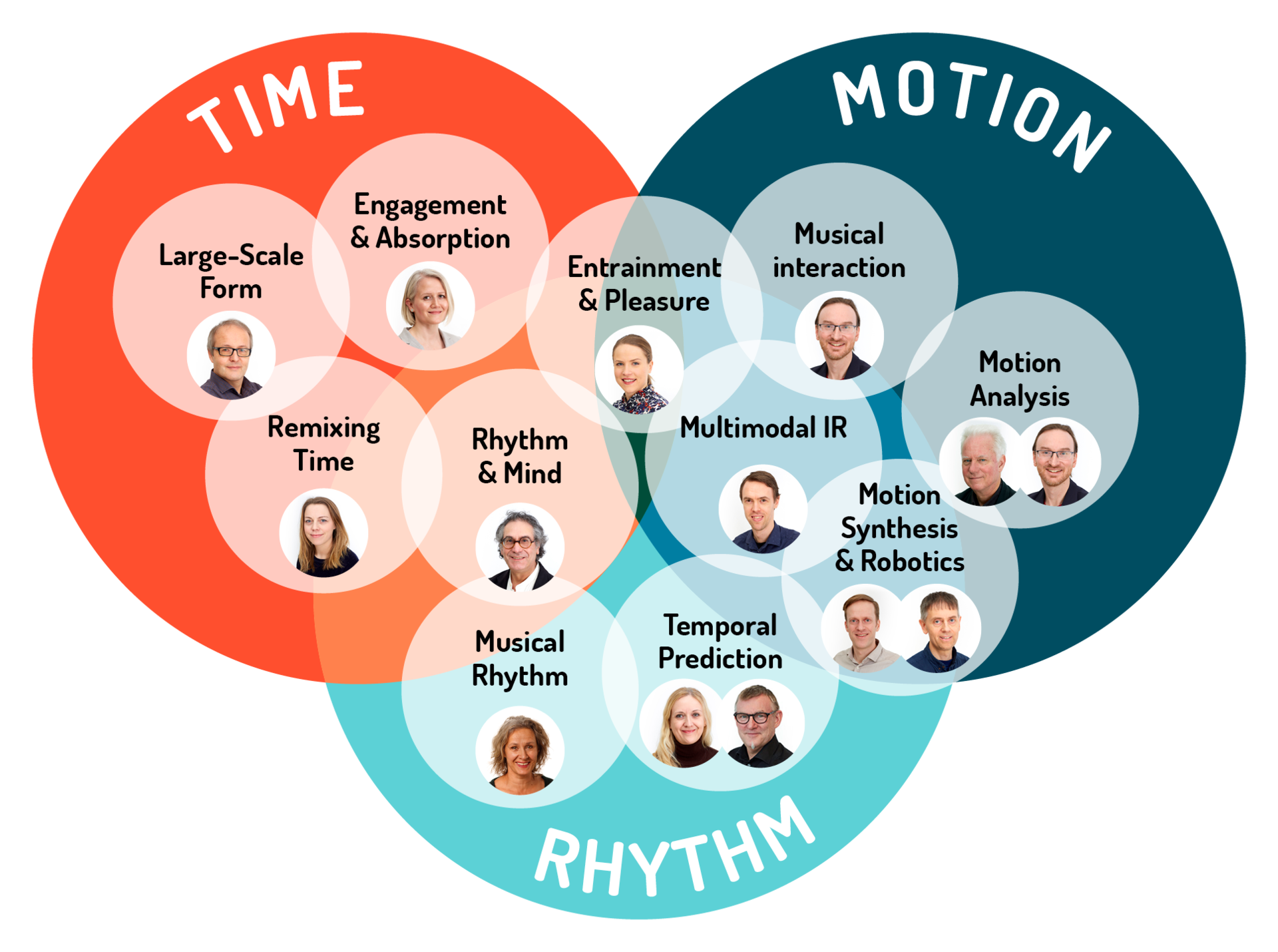

Rhythm
In the RHYTHM research cluster, we investigate the basic structures and features of rhythmic phenomena and the links between these structures and features and how time is organized in human perception and cognition. We are also interested in why some rhythms are experienced as pleasurable and invite dance or other body motion forms, whereas others do not.
We investigate rhythm at various temporal scales, from micro-rhythmic relationships at the millisecond level to patterns of rhythms unfolding over several seconds. We are particularly interested in complex rhythms, rhythmic variation (micro-rhythm), rhythm across modalities (hearing, vision and body motion) and cultural variation. We use qualitative, behavioural and neurophysiological methods, often combining them to shed light on the same questions from different angles.
We aim to understand how rhythm underpins our ability to structure past and predict future events and identify the perceptual and cognitive mechanisms underlying the experience and execution of rhythm.
Musical Rhythm
The Musical Rhythm research group researches a variety of musical genres where rhythm is a core dimension. The project TIME: Timing and Sound in Musical Microrhythm investigates interactions between temporal and sound-related features at the micro-level of rhythm.
Rhythm & Mind
The Rhythm & Mind research group focuses on how rhythm is processed in the brain.
Temporal Prediction
The group researching Temporal Prediction is run by Front Neurolab and aims at understanding one of the large unresolved questions about the human brain, namely how we predict upcoming events and action outcomes.

Time
The TIME research cluster addresses how rhythm impacts the structuring of temporal events beyond the ‘now’, that is, the extent to which rhythm plays a role in remembering and structuring longer time spans. We will also investigate the relationship between rhythm and the experience of fragmented time.
A second priority is to investigate the temporality of experiences of pleasure and absorption, the fact that rhythm facilitates entrainment and synchronization, and the social dimensions of this aspect of rhythm. A related question is how philosophical, psychological, and historical explorations of time can be revisited through new interdisciplinary perspectives on the experience of rhythm.
We aim to understand how rhythm underpins our ability to structure and remember large-scale formations of time and understand the related pleasure and engagement processes.
Large-Scale Form
Our research into Large-Scale Form is focused on the time structure of audio-visual and musical works lasting from a couple to 20 or 30 minutes.
Engagement & Absorption
In the Engagement & Absorption research group, we explore the rhythm and temporality of experiences characterised by deep engagement and/or absorption.
Remixing Time
The research group on Remixing time examines the pleasure of musical fragmentation and the related play with time, focusing on sample-based- and cut-and-paste music. In the RCN-Young Research Talent project MASHED, the focus is on the underlying aesthetics and temporality of so-called Mash-Up music.
Entrainment & Pleasure
The Entrainment & Pleasure research group focuses on why certain rhythms invite participation, the extent to which rhythm might have a social function, and the role of pleasure in such processes.

Motion
The MOTION research cluster focuses on analysing human body rhythm and the synthesis of rhythms with machines. The aim is to understand more about the human body's internal and external rhythms and how rhythms can be used in interaction. It is also relevant to understand how music influences people's body motion, such as in dancing, and when trying to stand still. Knowledge about the motion-inducing effects of music can then be used to create interactive systems in which the music is controlled through the human body.
The empirical work is done using various types of motion capture systems and physiological measurements. The analysis and synthesis parts also greatly involve computer-based analysis methods and different types of machine learning systems. The synthesis part includes creating visual displays of motion (animations) and the creation and use of robots to create physical motion.
The aim is to create basic knowledge that can be used to develop advanced rhythmic human-robot interaction, such as in dancing.
Motion Analysis
The Motion Analysis research group focuses on analysing human body motion using different types of motion capture systems (in the fourMs Lab) to understand and create rhythmic motion and interaction. The MICRO project focuses on how music influences people's body motion when they are trying to stand still.
Motion Synthesis and Robotics
The research group on Motion Synthesis and Robotics studies how machines can understand rhythm and benefit from rhythmic mechanisms. The EPEC project works on engineering predictability with embodied cognition principles and uses state-of-the-art facilities in the ROBIN lab at the Department of Informatics.
Musical Interaction
The Musical Interaction research group focuses on the creation of interactive systems for music perception and performance. The methods used combine prototyping, sound design, composition, human-computer interaction design, machine learning, and signal processing.
Multimodal Information Retrieval
The Multimodal IR research group uses computational approaches to extract meaningful information from rhythmic signals and connects to the new Nordic Sound and Music Computing Network.
RITMO's Research Priorities
In addition to RITMO's organizational clusters and operational research groups described above, we also have four research priorities that influence and guides all the other activities:

In addition to RITMO's organizational clusters and operational research groups described above, we also have four research priorities that influence and guide all the other activities:
Structure concerns our ability to structure the past and predict future events and discern variation regarding an underlying pattern.
This, in turn, facilitates interaction with both other human beings and external events, which is crucial, for example, in synchronisation, conversation and bodily coordination.
The research priority pleasure focuses on rhythm as a phenomenon related to social functions and well-being. Why do certain rhythms invite participation, such as dancing, while others do not?
Finally, the topic of time addresses that rhythm also impacts the ordering of temporal events far beyond the ‘now’ of its perceptual and cognitive unfolding. Here the focus is rhythm’s role in ‘remembering’ large-scale formations of time.
RITMO will pursue these four overarching research priorities in three empirical fields—music, motion, and audiovisual media—representing different but related modalities of rhythm.
RITMO in Numbers

Reported research results in 2018
RITMO's researchers have published many scientific articles and book chapters in 2018. They have also given talks and presentations at a large number of conferences around the world. The Centre's research results also include software toolboxes and apps, as well as several media contributions. You can see all of RITMO's results reported in CRIStin.

People
A total of 60 people were employed at RITMO in 2018, of which there were 26 women and 34 men. We work to achieve gender balance in our recruitments. Diversity and gender balance was also addressed in the yearly meeting with the Scientific Advisory Board.

The World at RITMO
RITMO employees come from many different countries: Argentina, Australia, Brazil, Colombia, Denmark, Finland, France, Greece, India, Italy, China, Mexico, Montenegro, Norway, Poland, UK, Turkey, Germany, USA.

RITMO in the World
RITMO has research cooperation with partners from all over the world: Argentina, Belgium, Brazil, Canada, Switzerland, Germany, Denmark, Spain, Finland, France, United Kingdom, Israel, India, Iceland, Italy, Japan, Netherlands, Sweden, USA.
RITMO Highlights
At a centre with 60 employees, there are always numerous things happening. In 2018 we were particularly proud of three things.
Moving in
RITMO's researchers are coming from three departments. Much effort has been put into collocating everyone in our new facilities in the west wing of Harald Schjelderups hus on the northwest side of the Blindern campus. In addition to offices and common spaces, we moved the fourMs lab and built new labs for FRONT Neurolab.
RITMO Largo
The grand opening of the Centre - RITMO Largo - was held on November 15th. With lectures, panels, music and party, and 200 participants from all around the world, it became a spectacular event!
RITMO International Motion Capture Workshop
In connection with the official opening, RITMO hosted an international workshop on topics relevant for music-related motion capture.
RITMO Stories
A project is always more than what you can read from a project page. Hear some of RITMO's researchers present their own research.
Anne-Kristin Solbakk is an associate professor at the RITMO Centre working within clinical psychology and neurophysiology.
Charles Martin is a postdoctoral fellow at the RITMO Centre where he works with developing new ways to predict musical intentions and performances in smartphone apps.
Mari Romarheim Haugen is a postdoctoral fellow at the RITMO Centre who focuses on music and motion correspondences in rhythm production and perception.
Simon H?ffding is a postdoctoral fellow at the RITMO Centre researching musical experiences from a philosophical and phenomenological perspective.
RITMO Seminar Series
In 2018 we started up the RITMO Seminar Series as a venue for presenting world-leading scholars from around the world. These events are open to the public and have attracted participants from all over the Oslo area.




RITMO Behind the Scenes
To the people working at RITMO, the Centre is so much more than just a working space. Even though everyday life at the centre evolves around research and work topics, the threshold for socialising and laughing is low, which creates a warm, energetic environment for the staff.
RITMO's Profile
It was clear from the start that RITMO could not only have a static, visual profile. After all, RITMO is about time, rhythm, and motion, and we wanted this to come through in our physical and digital appearance. The solution was to engage in a creative process with the design company Anagram and the composer Jon Balke. The result is a sonic-visual profile that captures some of the creative spirit of RITMO, and that can be reconfigured endlessly.

The visual profile
We have developed a visual mark / emblem based on the letter forms in the word RITMO, broken down to its smallest geometric constituents. The visual profile is a starting point consisting of flexible building blocks and some "rules" for use, which can be varied indefinitely and generate new opinions, structures and constellations.
Anagram
The Sonic Profile
The sonic profile is designed to match RITMO's organic bodily understanding of rhythms to a more psychological approach, via social and cultural aspects. It was important for me to create something that is not tied up in a locked sense of pace or groove, but represents a rhythmic force and a course that could be experienced dramaturgically.
Jon Balke, Batagraf

The Dynamic Profile
I was excited to be the first one to explore the re-configuration possibilities of the visual elements of RITMO's profile. The result, shown at RITMO Largo, was an interactive display of the visual elements projected on the floor. The elements reacted to the sound in the space. It was fascinating to see the elements come alive with people's talking and music playing, and I got many ideas for how to further develop the interaction.
Julian Fuhrer, RITMO PhD student
Awards

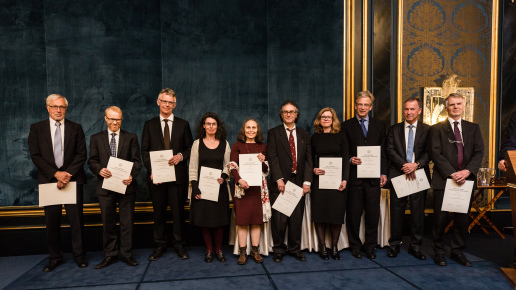

RITMO People

Scientific Advisory Board
The members of RITMO's Scientific Advisory Board are highly acclaimed researchers within their respective fields. The Board is vital to providing feedback on on-going and future research, and its members have been carefully chosen to support the different parts of RITMO.
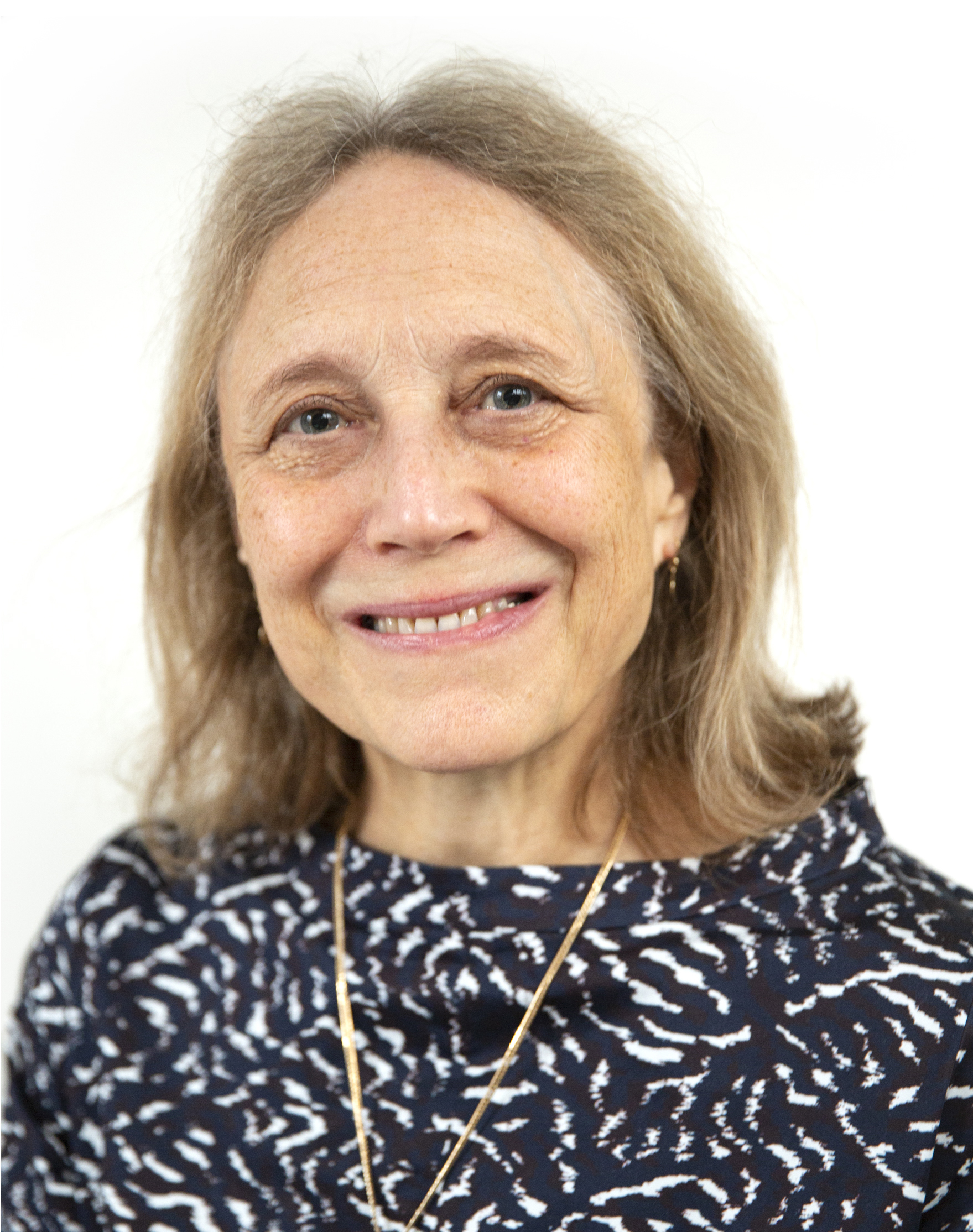


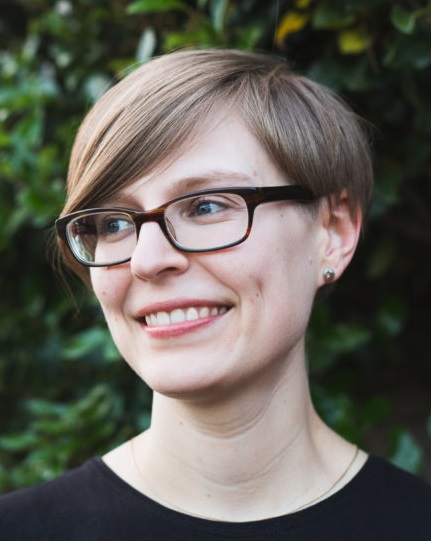

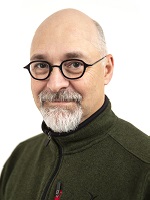
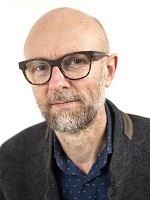
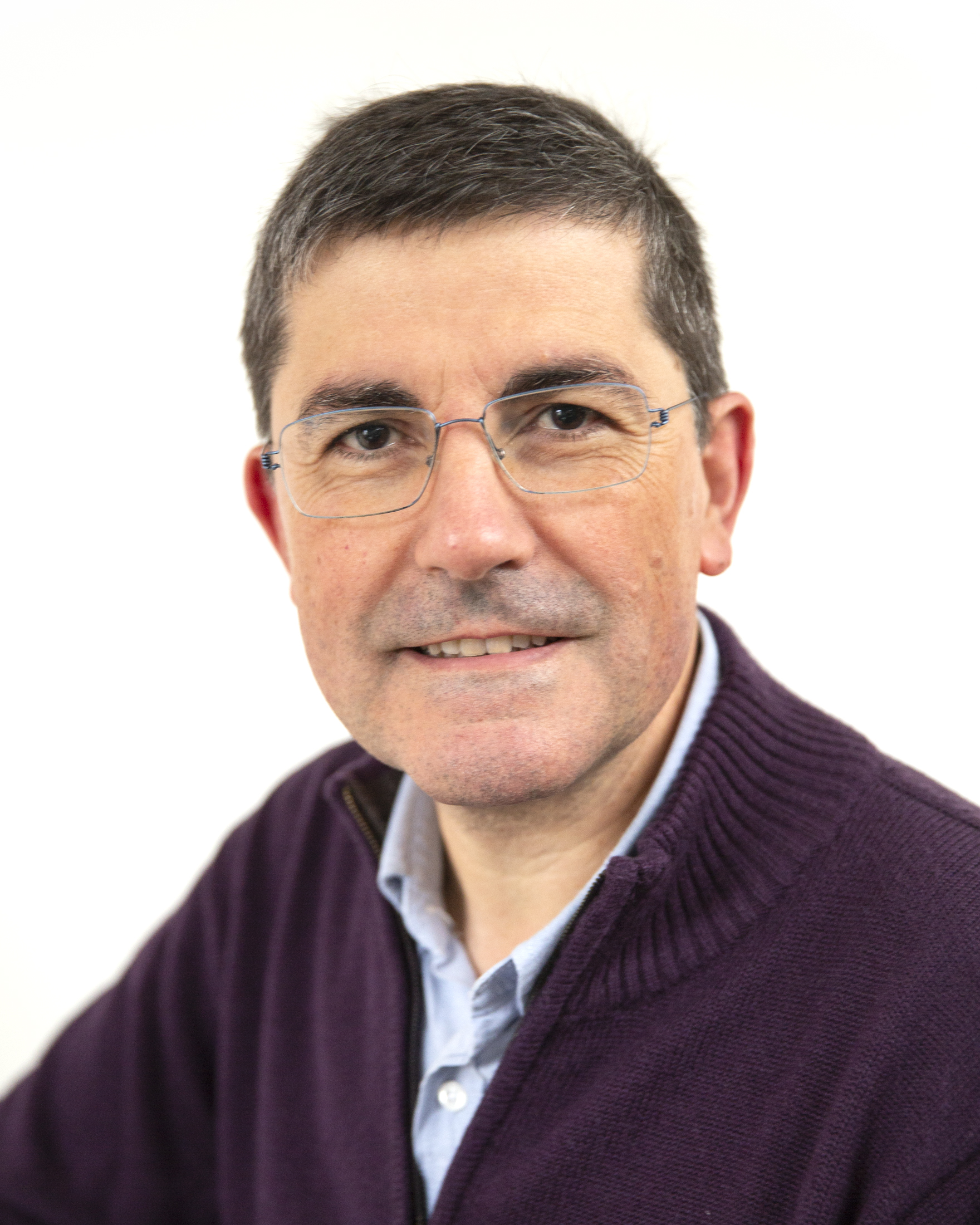
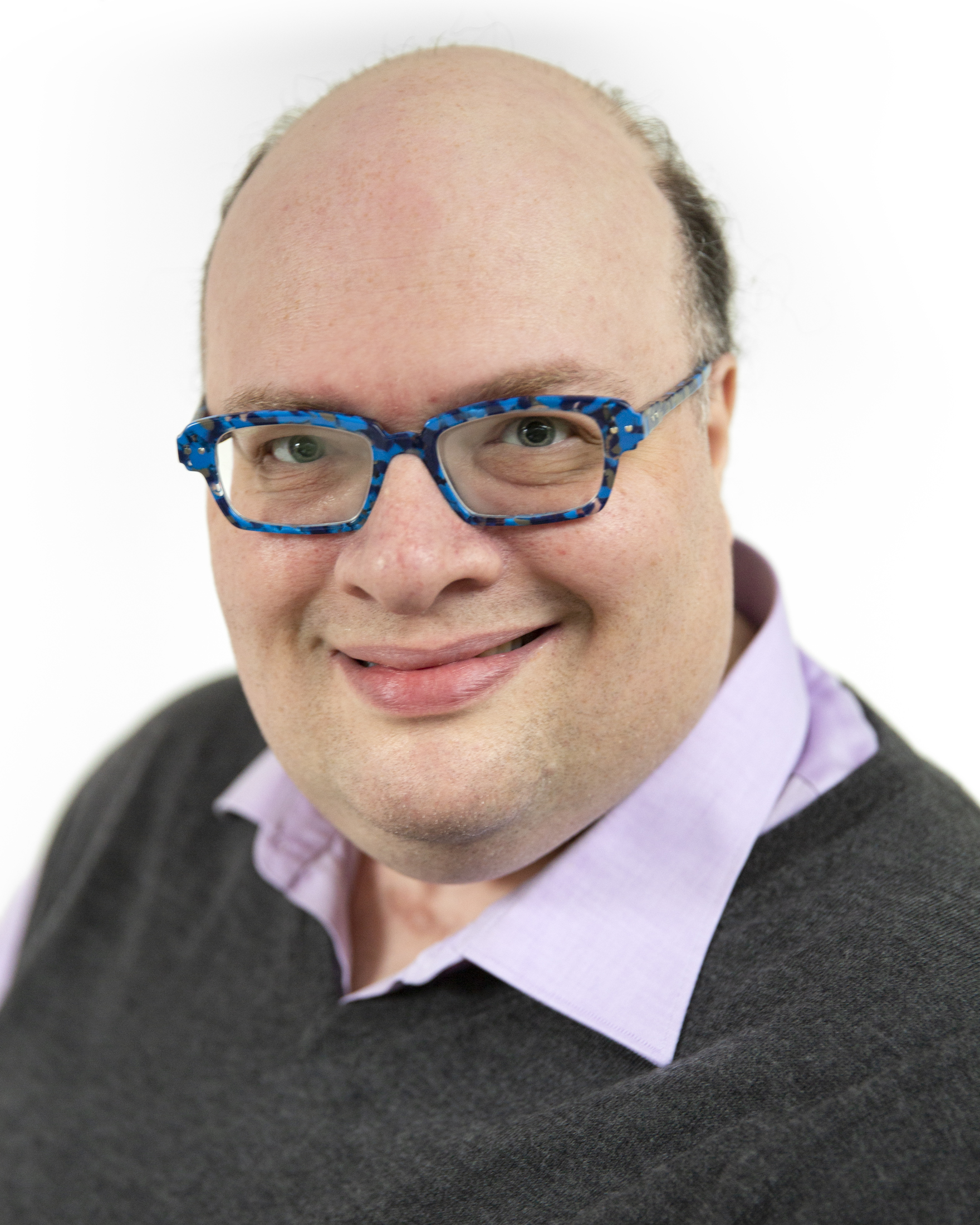

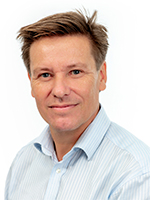
Steering Committee



Assistants







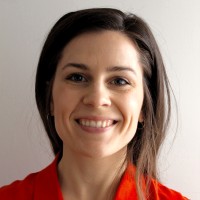




.jpg?alt=thumbnail)
